| VIII. Definitives of 15
October 1872 |
Engraved by Albert Barre, printed by Anatole Hulot in l�atellier de la Monnaie
in Paris
VIIIA Unadopted types
Die proofs - unfinished
1. 10 Bani Black. The inscriptions and the medallion are ready. The ornaments are
only finished in the bottom left corner.
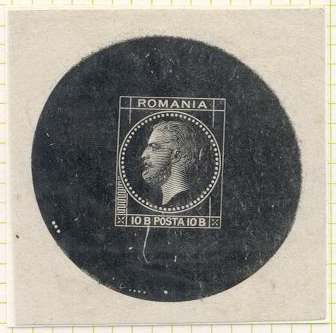
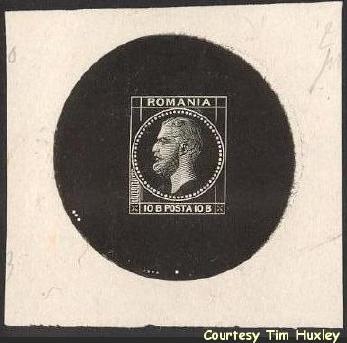
1a. 10 Bani Black. Resembles nr 1. Left corner almost ready.
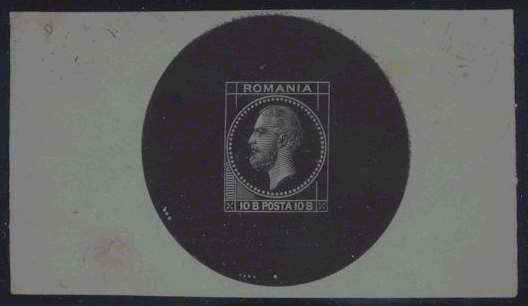
2. 10 Bani Blue. Both bottom corners ready.
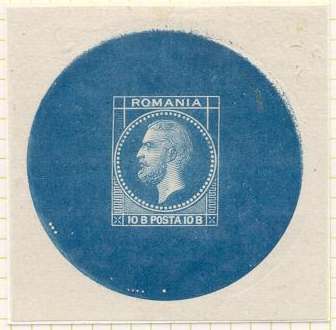
3. 10 Bani Blue. Resembles nr 2. Top left ornaments are almost ready.
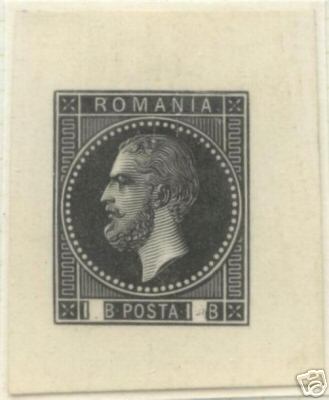
Courtesy: Razvan Pala | 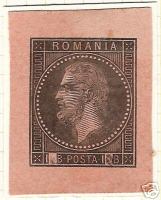
Courtesy: Chris Trevers |
4. Plug Dies (Paris or Bucharest?)
VIIIB Adopted types
On the unadopted types the inscriptions are stronger and larger than on the adopted types.
Die proof - unfinished
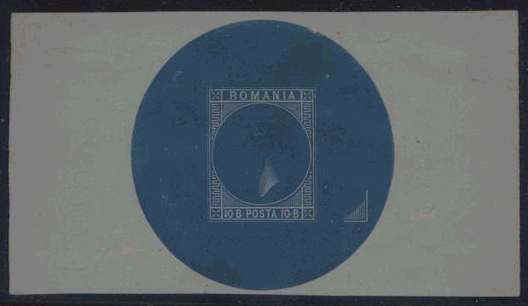
1. 10 Bani Blue The frame and the inscriptions are ready. Of the medallion only the neck
is visible
Die proof - finished
Printed on big fragments of (papier de Chine)
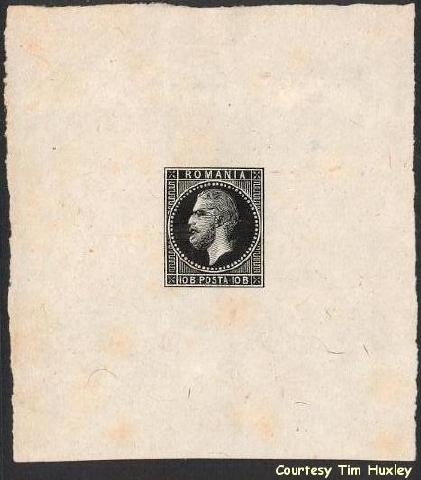
2. 10 Bani Black
Make-ready
There is one form of essays only found in this issue. Anatole Hulot of the National
Printing House in Paris introduced a new procedure to obtain better results regarding
clarity and detail in stamp-printing. This procedure, which was also used on all
french stamps between 1850 and 1875 printed by him (except the litographed Bordeaux issue)
was as follows:
(My french and my understanding of the printing process is not good enough to translate
this part. As for now I present it "as is")
"Une fois la planche de 150 galvanos pr�te, Hulot faisait simultan�ment une tirage
sur de la toile cir�e et plusieurs autres tirages sur des feuilles de papier de
diff�rentes �paisseurs. De ces derni�res feuilles on d�coupait soigneusement les
parties gui devaient �tre plus fortement frapp�es dans le tirage d�finitif. Puis on
collait ces petits morceaux de papier sur la toile cir�e, dans les endroits o� l�on
voulait que la presse appuy�t plus fortement. Souvent m�me on collait plusieurs couches
de ces petits morceaux de papier l�n sur l�utre, d�apr�s le degr� d�intensit�
qu�on voulait obtenir en certaines parties du timbre. La feuille de toile cir�e ainsi
pr�par�e �tait ensuite plac�e dans la presse d�imprimerie, en dessous de la feuille
de papier qui devait �tre imprim�e."
Make-Ready
This term is used in reference to the preparation made by the printer, after the printing
base has been fitted in the press, to insure that a satisfactory impression results over
all the printed sheet when the press is operated. Make-Ready compromises local adjustments
of pressure; these adjustments are effected in various ways: by placing packing, sometimes
a whole sheet of paper, sometimes only a scrap, often more than one layer thick (a) under
a mounted plate (to bring it up to printing height) - termed "underlay"; (b)
between a plate and its mount - termed "interlay"; and (c) between the back of
the paper to be printed and that part of the press that provides the pressure - termed
"overlay"; other forms of "make-ready" include the use of a blanket or
felt or other material to provide some resilience in the pressure.
(Fundamentals of Philately L.N. Williams)
THE FIRST LAYER:
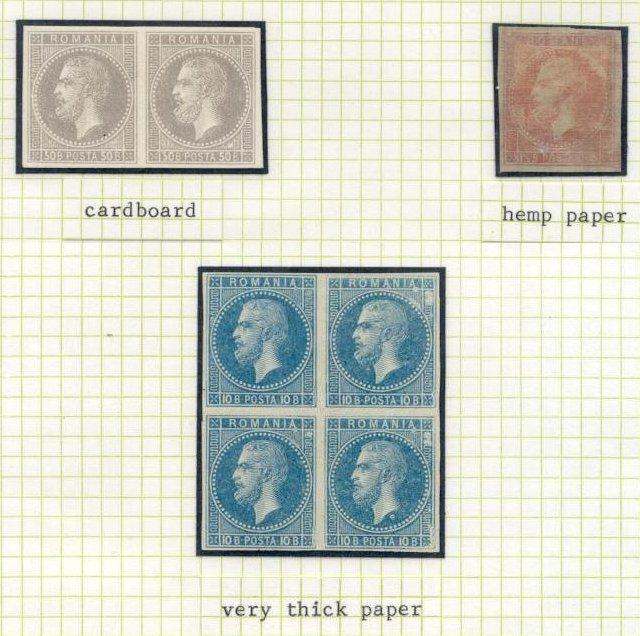
The second layer
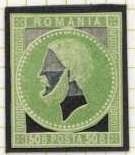
The second and third layer
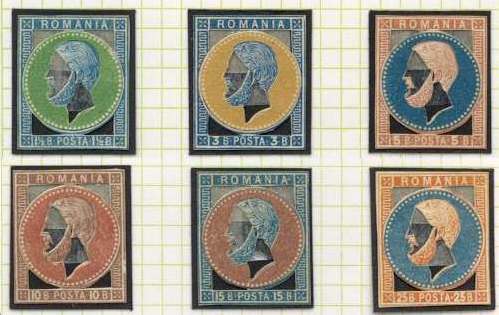
The three layers together
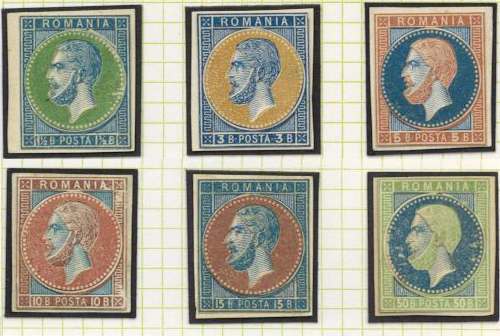
Two sheets of make-ready (to se whole sheet, click on image)
A whole page filled with decoupage sheets!!!!!
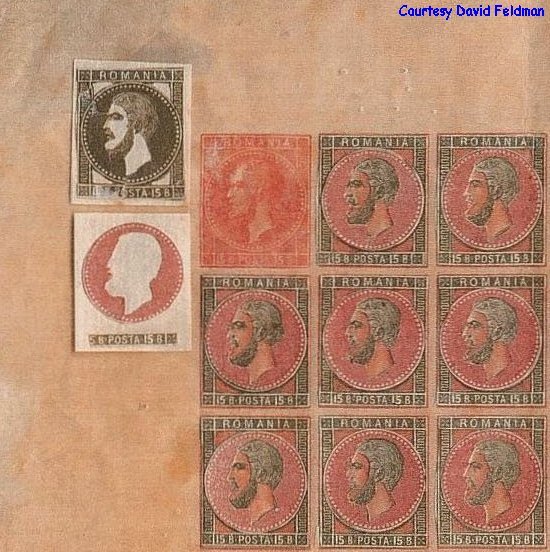
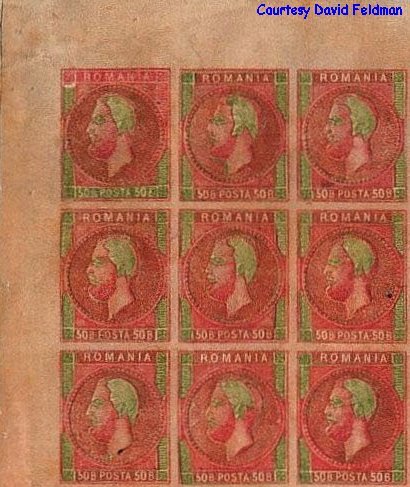
Listing from Cohen:
Printed on (waxed cloth?) toile cir�e , yellow
| A. 1 1/2 B Yellow-brown |
B. 3 B Yellow-green |
C. 3 B Yellow-brown |
D. 10 B Blue |
| E. 15 B Yellow-brown |
F. 25 B Yellow-brown |
|
|
Printed on very thin paper
| G. 1 1/2 B Blue |
H. 5 B Blue |
I. 10 B Blue |
|
Printed on normal paper
| J. 3 B Yellow-green |
K. 10 B Blue |
L. 25 B Blue |
M. 25 B Brown |
More make-ready: Yasuki Ota collection
Even more makeready..
And some more..
And a block of 29 5 B blue (test print of decoupage?)
courtesy Yaman AuctionsOne sometimes encounters for this issue so-called essays in two
or more colours obtained through cutting the middle medallion from one essay (or stamp)
and gluing it upon another, of a different colour. Ed. Cohen had seen a lot of such
items. They are fantasy products, probably inspired by these cut sheets, and can mostly be
readily identified, as they Bucharest impressions were used for their manufacture.
Plate proofs
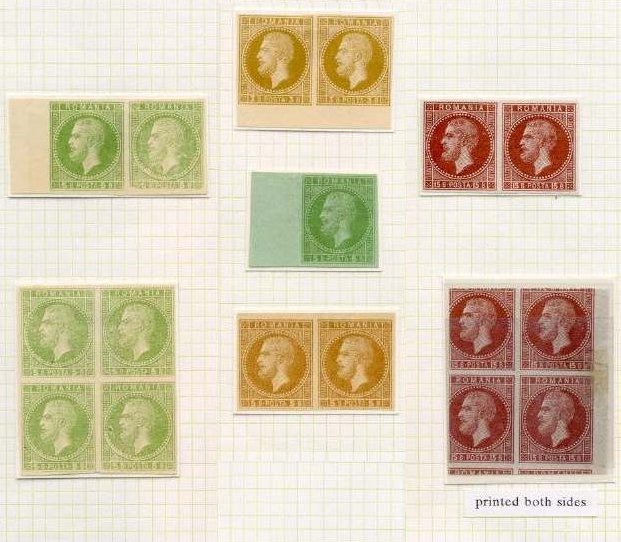
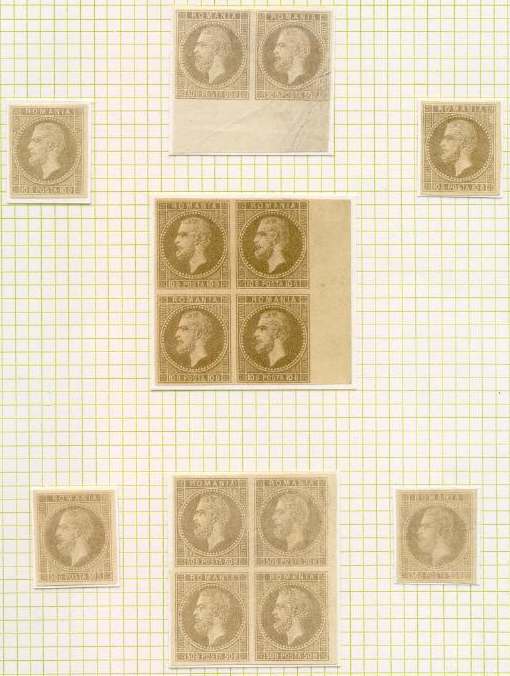
5B in issued colour, bl of 25 courtesy Paul Hirsch
| 3. 3 B Ochre |
4. 5 B Yellow-green |
5. 5 B Green on Greenish |
6. 5 B Yellow-brown |
| 7. 10 B Grey |
8. 10 B Dark Olive |
9. 15 B Lilac brown |
10. 25 B Grey |
| 11. 25 B Grey on Rose |
12. 25 B Yellow-brown on Rose |
13. 50 B grey |
|
| UPU Specimens |
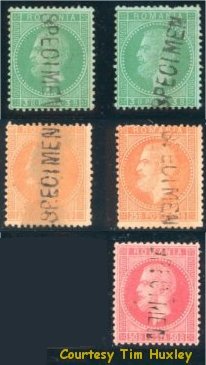 |
















